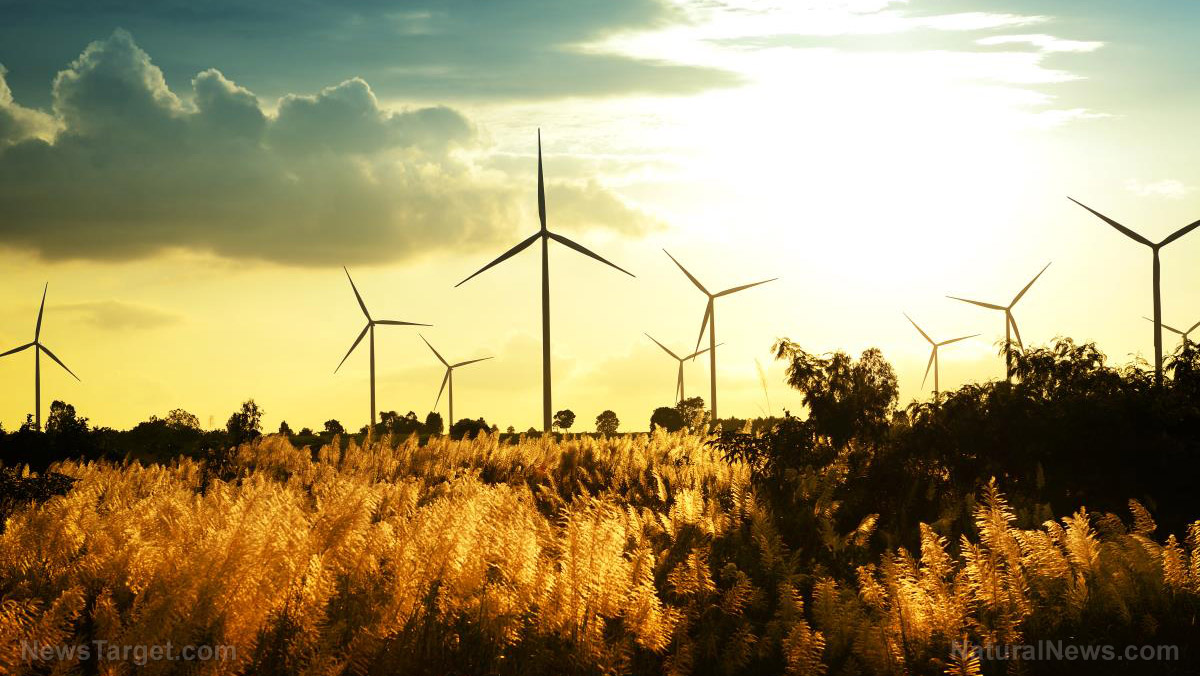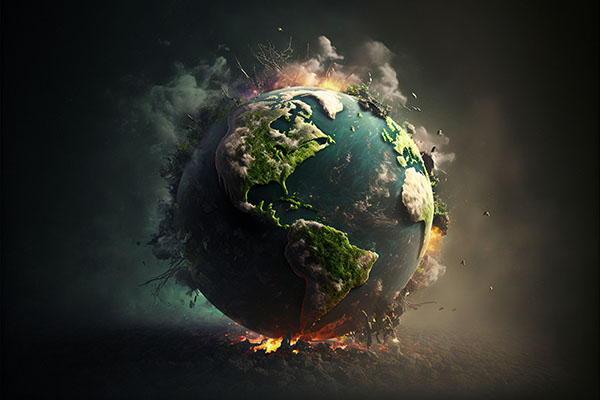
A bulk of the world's rare earth elements (REEs) comes from two places: China and Africa. Chinese REEs account for 95 percent of the world's supply, and reports indicate that the situation isn't pretty. Not only is the extraction of these minerals the exact opposite of "green" and "clean," but the folks tasked with performing the labor – and those who end up encountering much of the polluting byproducts – represent some of the world's most vulnerable.
There are two general classifications for REEs: The "light" variety and the "heavy" variety. Both categories include elements that are used in things like energy-saving light bulbs, wind turbines, solar panels, hybrid vehicles and their various automotive catalysts, rechargeable batteries, defense technologies, and smartphones. And both varieties are said to take a heavy, and often highly toxic, toll on soils and the environment.
'Energy-saving' light bulbs are a toxic nightmare for people and the planet
Back in 2007 when then-presidential candidate Barack Obama promised to "immediately sign a law that begins to phase out all incandescent light bulbs," greenies everywhere celebrated what they perceived as a major victory as Americans would soon be forced to "reduce their carbon footprints." But it has since been revealed that these so-called energy-saving technologies are actually more polluting than their predecessors.
In order to manufacture those irritatingly harsh compact fluorescent bulbs that environmental extremists love to claim are "better for the planet," several REEs – not to mention toxic mercury – are required. These include yttrium and europium, both of which have to be mined from deep within the earth. Since many of the mines that unearth it are located in China, where environmental regulations are slim to none, this translates into gobs of pollution that end up in lakes, streams, and waterways.
Like yttrium, europium is similarly destructive, not only to the earth but also to local towns and villages that end up getting dumped on when it comes to disposing of the many polluting waste byproducts that are leftover from processing. These include carcinogenic substances like sulphates, ammonia, and hydrochloric acid, all of which are used to separate the "good" parts of REEs from the "bad" parts.
Mining of neodymium and other rare earth minerals used in electric motors, wind turbines causing 'environmental pollution emergencies' in China
For all the hype about how much better electric and hybrid vehicles are compared to the "gas guzzlers" that most of us drive, the fact remains that these "environmentally friendly" alternatives are loaded with REEs that reports indicate are causing unprecedented destruction throughout China where most of them are mined.
The Chinese government admits that the mining of REEs such as neodymium (used in electric motors, engines, headlight glass, and wind turbines for magnetic purposes), cerium (used in hybrid batteries and catalytic converters), terbium (used in engines and magnetic components), and lanthanum (used in fuel additives, fuel cells, and hybrid batteries) have created a scenario in which the country is now stricken with "landslides, clogged rivers, environmental pollution emergencies and even major accidents and disasters."
Many of these same elements are also used in smartphones to make their circuit boards, vibrating devices, screens, glass, and even speakers. Many modern conveniences, in fact, contain one or more of the 17 elements considered to be "rare earth," which are described by the United States Geological Survey (USGS) as being "iron grey to silvery lustrous metals" that are "typically soft, malleable, and ductile; and usually reactive."
Rare earth mineral waste is so prolific that it even taints food crops
In saying that most of these metals currently come from China, it is more precise to say that most actually come from a specific region of China known as Baotou, a city in China's Inner Mongolia Autonomous Region that is home to roughly 2.5 million people. In Baotou, rare earth mining produces some 10 million tons of wastewater per year, which is pumped into nearby dams, which is where many locals get their drinking water.
In other areas where REEs are mined such as in Malaysia, reports have emerged suggesting that solid waste from REE mining is ending up not only in water supplies but also on crop land. Production of REEs reportedly creates a "tremendous amount" of solid waste, and this waste has to go somewhere. Perhaps more often than not, it simply gets dumped using the cheapest means possible, which often means pumping it into a remote area where it ends up seeping into the ground or getting washed downstream to areas where food is being grown.
And it isn't just China and Malaysia where such mining is taking place. Molycorp Minerals, which is currently trying to work through a debt dispute, was (and could once again soon be) a major producer of REEs in the state of California. The Vale corporation is working through trying to mine REEs in Brazil, and a Toyota subsidiary is prepping to start mining REEs in Vietnam as well. Even the mostly uninhabited country of Greenland is on the radar for possible REE mining operations, as the ice-covered nation is said to be rich in them.
But the long-term consequences of such mining are disastrous, as evidenced by a half-century of such operations taking place throughout China. Official reports indicate that all of this REE mining and processing has "severely damaged surface vegetation, caused soil erosion, pollution, and acidification, and reduced or even eliminated food crop output."
Most rare earth minerals are conjoined with cancer-causing radioactive elements like thorium
Another thing to keep in mind about the nature of REE mining is that almost all REEs are bound to radioactive substances in the ground from which they have to be separated in order to be used in "green energy" technologies and consumer products. This is what makes REEs "rare" – as they're not actually rare in their quantity so much as they are rare in their purity.
In many cases, REEs are bound to the radioactive element thorium in the ground, which has to be refined and processed in order to remove it. In the process, this chemical is released into the environment where it's been linked to causing increases in cancers of the lungs, pancreas, and other vital organs.
"As the world's hunger for these elements increases ... the waste is going to increase," says Nicholas Leadbeater, a chemist from the University of Connecticut whose research focus centers around "green" technologies.
"The more mines there are, the more trouble there's going to be," he adds, noting that emerging research is working on developing new types of "green" technologies that do not require REEs in order to function. One example is an electric motor, currently under development by Toyota, that does not require the use of an REE-powered battery.
Sources for this article include:
Please contact us for more information.























